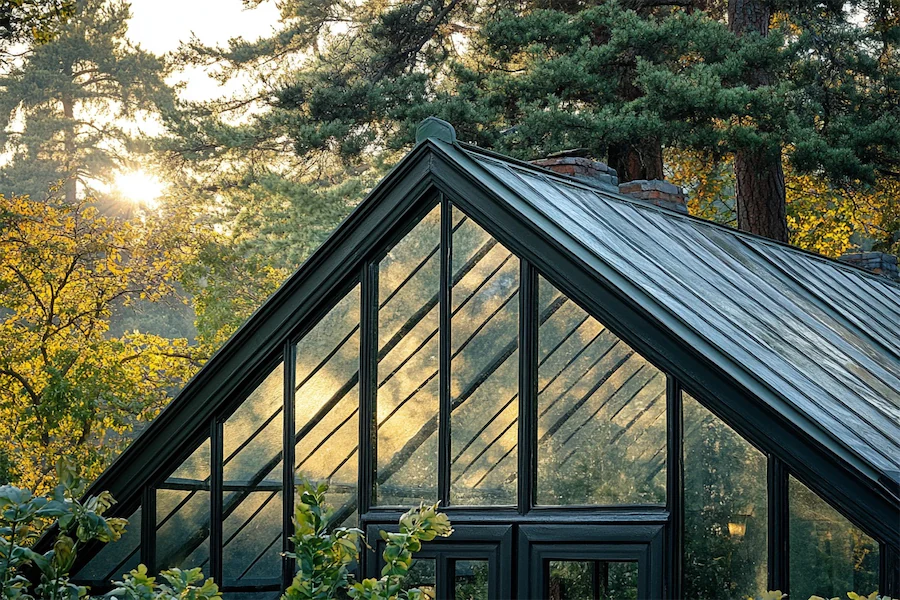A greenhouse roof is a critical component in creating an optimal environment for plant growth. It influences light transmission, temperature regulation, and overall structural integrity. Selecting the appropriate design and materials for a greenhouse roof is essential to ensure durability, energy efficiency, and suitability for the specific climate and plants being cultivated.
History and Origins of Greenhouse Roofs
The concept of greenhouses dates back to Roman times, but it was during the 17th century in Europe that greenhouse design became more sophisticated. Early greenhouses, known as “orangeries,” featured glass roofs and walls to cultivate exotic plants and citrus fruits. The use of glass allowed maximum sunlight penetration, essential for plant photosynthesis. Over time, advancements in materials and construction techniques have led to diverse greenhouse roof designs tailored to various horticultural needs and climatic conditions.
Key Features of Greenhouse Roofs
When designing a greenhouse roof, several key features must be considered:
- Light Transmission: The roof material should allow sufficient sunlight to reach the plants. Materials like glass and certain plastics offer high transparency, facilitating optimal photosynthesis.
- Insulation: Proper insulation helps maintain stable internal temperatures, crucial for plant health. Materials such as polycarbonate panels provide good thermal insulation, reducing heat loss during cooler periods.
- Durability: The roof must withstand environmental factors like wind, snow, and UV radiation. Durable materials like polycarbonate and fiberglass are often preferred for their resilience.
- Ventilation: Incorporating vents or adjustable panels in the roof design aids in regulating temperature and humidity levels, preventing overheating and promoting air circulation.
Applications of Greenhouse Roofs
Greenhouse roofs are utilized in various applications, including:
- Commercial Agriculture: Large-scale greenhouses with specialized roofing materials support the mass production of crops, allowing for controlled environments that enhance yield and quality.
- Research Facilities: Greenhouses with adaptable roof designs facilitate scientific studies on plant growth, genetics, and pest control under controlled conditions.
- Residential Gardening: Home gardeners use greenhouses with simple roof designs to extend growing seasons and cultivate plants that require specific climates.
Considerations When Choosing a Greenhouse Roof
Selecting the appropriate greenhouse roof involves evaluating several factors:
- Material Selection: Options include glass, polycarbonate, polyethylene film, and fiberglass. Each material has its pros and cons regarding light transmission, insulation, durability, and cost. For instance, glass offers excellent clarity but is heavy and fragile, while polycarbonate is lightweight, durable, and provides good insulation.
- Roof Design: Common designs include gable, flat, and dome-shaped roofs. The choice affects light distribution, water runoff, and structural complexity. A gable roof, with its two sloping sides, allows for efficient water drainage and maximizes sunlight exposure.
- Climate Considerations: In regions with heavy snowfall, a steeper roof pitch is advisable to prevent accumulation, while in warmer climates, materials with high UV resistance are beneficial. For example, polycarbonate panels are known for their durability and UV protection, making them suitable for various climates.
- Budget Constraints: Balancing initial costs with long-term benefits is crucial. While materials like polycarbonate may have higher upfront costs, their longevity and energy efficiency can offer savings over time.
Conclusion
The greenhouse roof is a pivotal element in greenhouse design, directly impacting the effectiveness of the growing environment. By carefully considering factors such as material properties, design configurations, climate suitability, and budget, one can select a greenhouse roof that ensures optimal conditions for plant cultivation, energy efficiency, and structural durability.
